Oman. An Arabian fairy tale. By Dick O’Hary
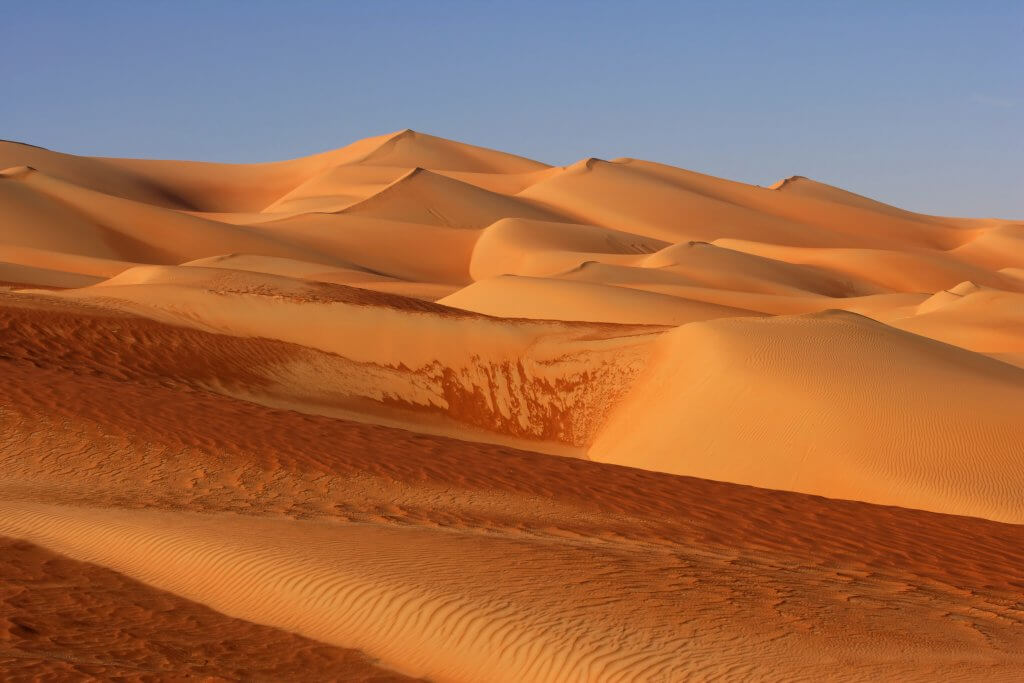
For my new TV travel show “Legend Hunt”, I am trying to cover every corner of the planet in search of different legends, traditions and values, combined with magical landscapes… and I already covered many countries so far…When I wanted to film the Arabic world, it was difficult to find a country that could represent this region, since all of those countries became so modern and totally westernised, some of them are even more westernised than the West itself, like Dubai, for example.
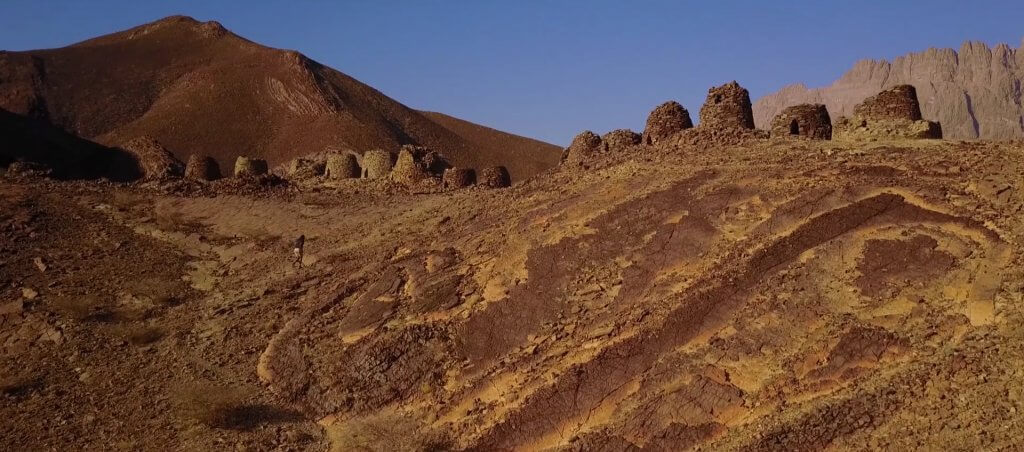 So, it was very hard to decide where to film, but then I found the perfect country that could represent the real Arabic world, with all of its values, dignity, traditions and way of life…it’s Oman!
So, it was very hard to decide where to film, but then I found the perfect country that could represent the real Arabic world, with all of its values, dignity, traditions and way of life…it’s Oman!
Oman is neither a republic nor a kingdom. It is a Sultanate, which means that it’s ruled by a Sultan. Sultan Qaboos of Oman is a very smart and just leader who keeps a wonderful balance in this rich country between being a modern country (in a way), but, on the other hand, a country with a very old traditions and a strong identity.
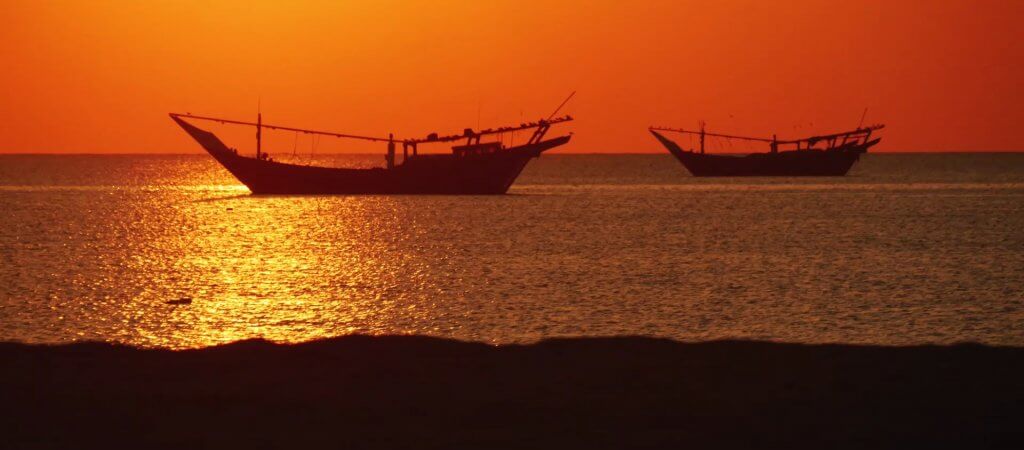
The Sultanate of Oman, itself, is a wonderful country; very diverse and blessed
from nature with many things. Mountains, sea, desert, valleys and very kind, peaceful people, this country is relatively unknown and an unfrequented travel destination because it also used to be closed to foreigners for long time, so not many people know much about it.
I started in Muscat, the capital city of Oman. This is not a freaky city, with skyscrapers and mighty shopping centres, like other towns in the Gulf countries. No, it’s a very traditional, clean city, renowned for being one of the safest cities in the world. It’s an ancient place, rich in history, beautiful to stroll around for few days and very cosy, with its small white houses, surrounded by beautiful rocky hills, a clear blue ocean and wonderful beaches…you can even surf on the beach in the centre of the city.
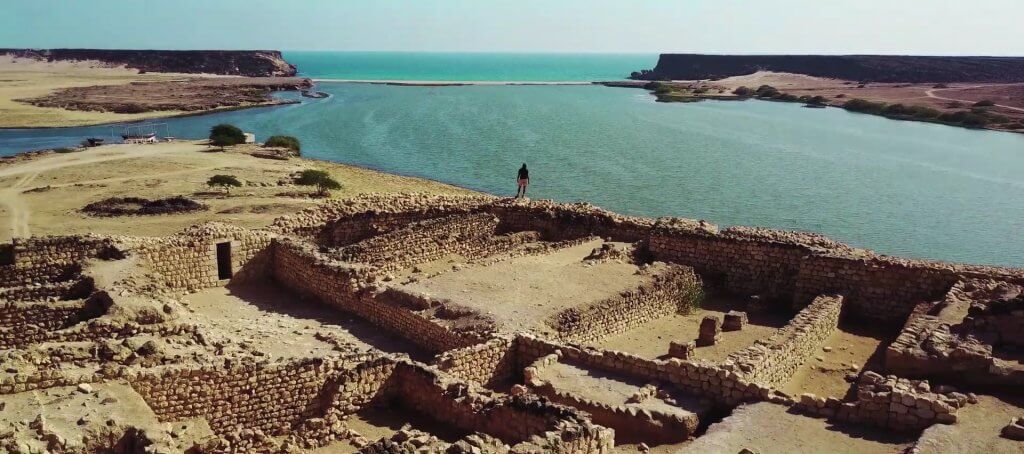
After few days in Muscat, planning for my journey, strolling in the bazaars and on the beaches, enjoying the evenings under the stars in some of the beautiful hotel lounges, sipping Martini CocktailJ, it was finally time to hit the road and, so, I rented a 4X4 car to explore the country.
My first destination was a very interesting and unique old town about 200km from Muscat, called “Bahla”. This town is not a touristy destination, neither for foreigners nor for Omani people. In fact, if you tell anyone that you are going to “Bahla”, he will wonder and start to ask you why, even trying to convince you not to go there and you may wonder why that is!
Well, it is believed in the whole Arabian penninsula that “Bahla” is the birthplace of the “Jin” and everybody in this town has at least one scary story about an encounter with the “Jin” and that is already very interesting reason for me to visit this town.So, who is the “Jin”?
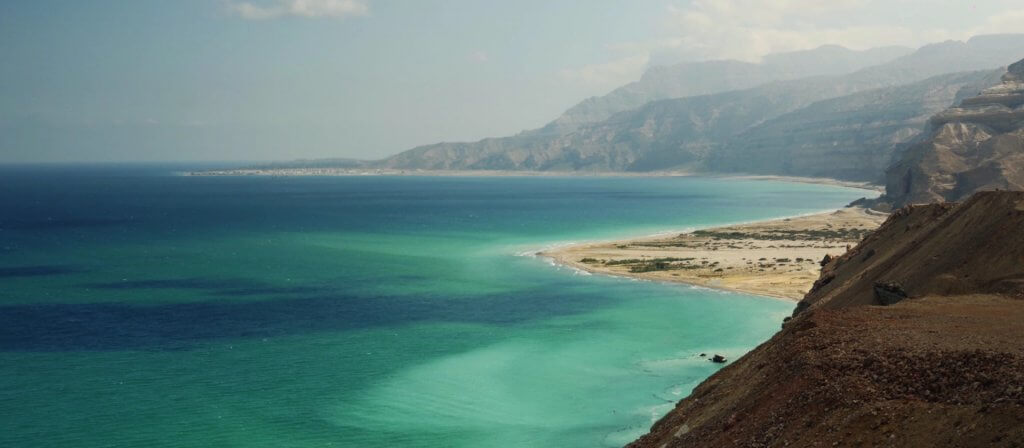
For lots of people, the “Jin”, or what we called “Genie”, is a ghost or phantom, but, as it was mentioned in the holy Quran, the “Jin” is a powerful creature that God has created from a smokeless fire, as he created humans and angels. This creature is invisible to us and much more powerful than us. It can change appearance and can be found anywhere. But, the people here say that this creature rather lives far away from humans, so it lives in the desert, mountains or deserted places.
I arrived at “Bahla” in the evening. It looked like any other small town, but my interest was the old town, which is totally ruined. No one lives here. They all live in the new part of town. I couldn’t wait to see this infamous place and I decided to go for a walk there at night!
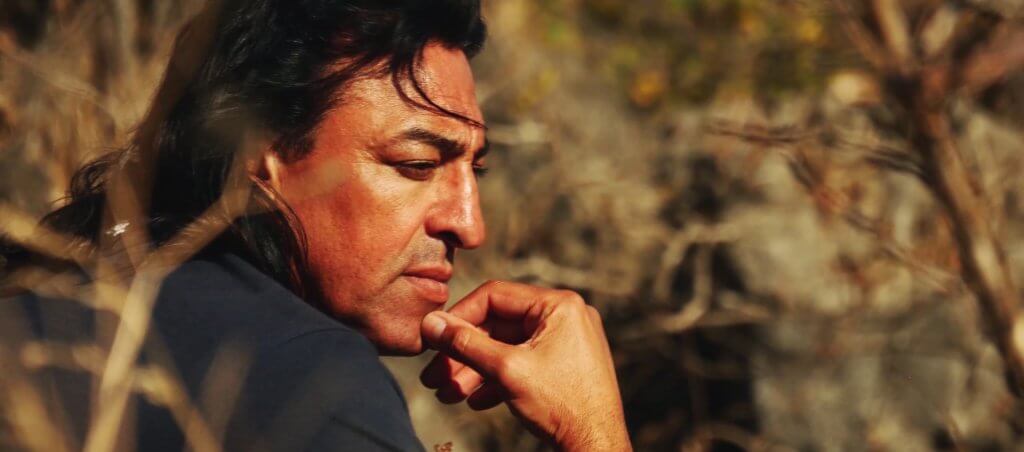 This old town has an ancient wall around it. As I entered the town by myself, it was very spooky somehow, with all those falling, empty houses, the doors half-opened, cats jumping around everywhere as I stepped into total darkness except for the moon above. The only sound to hear was the sound of my lonely steps through the very narrow and winding lanes.
This old town has an ancient wall around it. As I entered the town by myself, it was very spooky somehow, with all those falling, empty houses, the doors half-opened, cats jumping around everywhere as I stepped into total darkness except for the moon above. The only sound to hear was the sound of my lonely steps through the very narrow and winding lanes.
After 2 hours of exploring the ghost town at night and soaring to the sky with my imagination, I finally walked back to the modern part of the town and, there, at the centre, in one little square, stood an old tree with a fence around it. The night guard of the place rushed to me as I approached the tree and told me that I shouldn’t touch this tree or even come too close to it. Otherwise, I would be touched by the “Jin”! That’s why they have this fence around it! He said that this tree was haunted and he, himself, often saw a female “Jin” on the top of the tree before dawn. I ended up invited by him, sitting in the square, sipping tea, staring at the tree, with his stories pouring in my ears.
Back in my hotel, there was incense burning in every corner, and when I asked
why, the owner smiled and explained that it protects the place from the “Jin”.
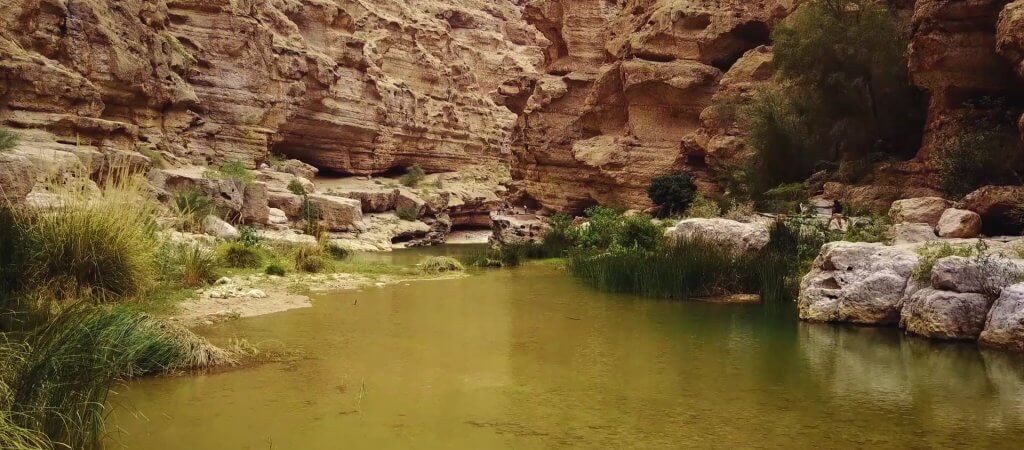 “Bahla” is like a green oasis in the middle of the desert, with lots of palm trees and water springs. This town also has very interesting history, for it used to be the capital of Oman for over 300 years. It has the longest wall in Arabia (over 12 km long), which defended the city from the invasion of the different nomadic tribes over the centuries, and it also has the oldest castle in Oman. They have been trying to renovate this castle now for over 20 years, but only part of it is ready. The rest they can’t finish. They say that whenever they complete a day of work, they will come next morning to find it all had fallen down again, and everybody believes that the “Jin” does not want it to be renovated.
“Bahla” is like a green oasis in the middle of the desert, with lots of palm trees and water springs. This town also has very interesting history, for it used to be the capital of Oman for over 300 years. It has the longest wall in Arabia (over 12 km long), which defended the city from the invasion of the different nomadic tribes over the centuries, and it also has the oldest castle in Oman. They have been trying to renovate this castle now for over 20 years, but only part of it is ready. The rest they can’t finish. They say that whenever they complete a day of work, they will come next morning to find it all had fallen down again, and everybody believes that the “Jin” does not want it to be renovated.
Almost every second person in this town has told me a story about the “Jin”. They tell about visions, sounds or unexplainable fire that can happen in any house and without any reason, and that puts “Bahla” on the top list of the most haunted places in the world. Myself, I didn’t have any encounter with the ‘Jin’, neither good nor bad, and I just had a pleasant stay in that desert oasis!
After the ghost city, I needed to be alone and far away from people and their stories, so I was on my way heading to the desert, to one of the biggest sand dunes desert of Oman. It’s called “Ramlat Wahiba”. These dunes stretch from north to south over a huge area in central Oman, going all the way to the ocean in the east.
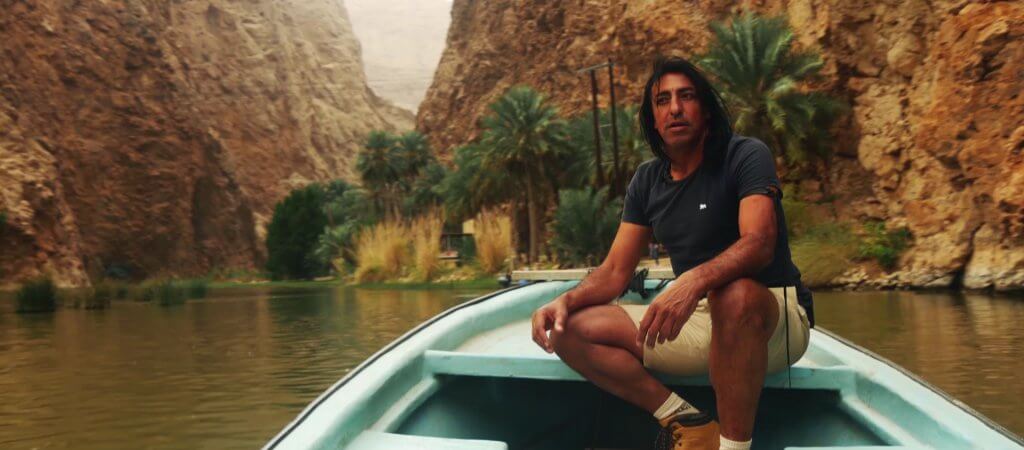 I enjoyed the silence and loneliness of the desert so much and Oman is the perfect place for that. Here, I also have a Bedouin friend named “Ali”, whom I met on my first visit to Oman a few years ago. He has a few tents in the heart of the desert, far away from any sign of civilisation, where he can accommodate a few people, so it’s a chance to sleep in a Bedouin style tent and, more importantly, to have fresh water and a toilet, which he has there (this is the only luxury I need from our civilisation). Ali is a kind and genuine Arab man. He lives in the wild, he respects every creature around him, he doesn’t see himself as the centre of the universe and he values the preciousness of silence. It’s always a pleasure for me to visit him.
I enjoyed the silence and loneliness of the desert so much and Oman is the perfect place for that. Here, I also have a Bedouin friend named “Ali”, whom I met on my first visit to Oman a few years ago. He has a few tents in the heart of the desert, far away from any sign of civilisation, where he can accommodate a few people, so it’s a chance to sleep in a Bedouin style tent and, more importantly, to have fresh water and a toilet, which he has there (this is the only luxury I need from our civilisation). Ali is a kind and genuine Arab man. He lives in the wild, he respects every creature around him, he doesn’t see himself as the centre of the universe and he values the preciousness of silence. It’s always a pleasure for me to visit him.
I got my tent there. The dry food that I brought with me and my soul was already flying over the desert sand… it’s the only place on earth where you really don’t hear anything. For example, in the forest, you will hear the rustling of the leaves or the wind in the trees. By the
sea, you will hear the waves or the sound of the water, not what we hear in townsJ. In the desert, you feel like your ears are plugged! You really hear nothing… I need that very often to purify my soul.I spent a few days there. My mornings and afternoon, I spent walking a lot over the sand dunes, meeting all kind of reptiles and insects that live there. In the heat of the day, I sat in the shade of my tent writing, as I watched over the endless ocean of sand….at night, I laid outside on my back with that mighty dome of stars all around me, the cool breeze blowing in my hair and thousands of shooting stars flying above me.
I could stay here forever. It’s a place to lose the burdens of life, to think and to create, but I had to move, so I headed to some mountain’s “Wadi”.
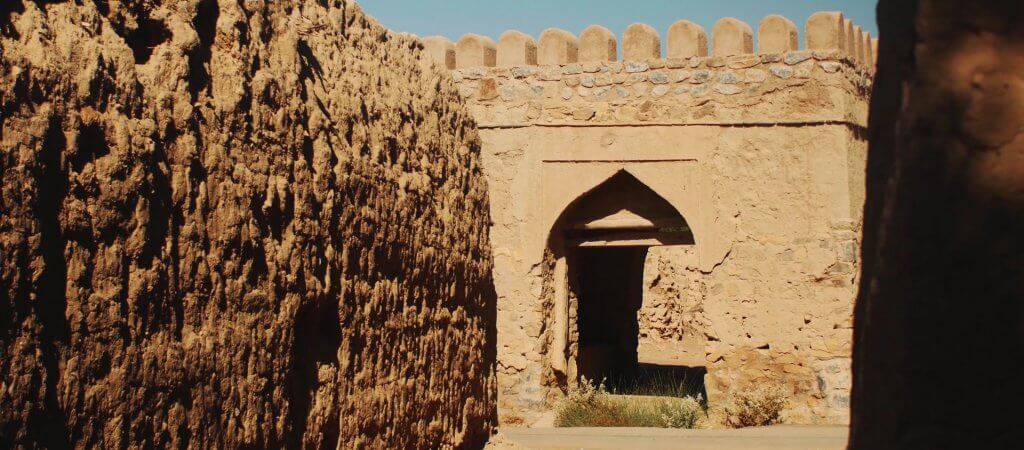 Oman has many “Wadis” or “Canyons”. They’re beautiful and oasis-like, mostly with fresh water springs and palm trees, and I wanted to visit one of them, so, after purifying my soul in the desert, I headed to one of my favourite canyon, called “Wadi Ash Shab”.
Oman has many “Wadis” or “Canyons”. They’re beautiful and oasis-like, mostly with fresh water springs and palm trees, and I wanted to visit one of them, so, after purifying my soul in the desert, I headed to one of my favourite canyon, called “Wadi Ash Shab”.
To see the canyon, you have to leave the car and hike inside. It’s mostly a narrow gorge, sometimes so very narrow that the walls almost touch. There’s no trail or a track there. You just have to make your way over the huge rocks that cover the bottom of the canyon, very often jumping over the water pools and streams that run through it, as well!
After about an hour of hiking, I was at the last accessible point that you can reach on foot and, if I wanted to see the waterfall in the cave at the end of the canyon, I would have to swim under the rocks to enter the cave, and that’s what I did.
It was very refreshing after the hard walk and the sweating to jump into this fresh, clear water, but it was also kind of scary to be swimming under those huge rocks, with only a tiny space to put my nose above the water to catch my breath. Luckily, it wasn’t long and, at the end, I was in this big closed cave with a small stream of sunshine coming from the top of it and a strong waterfall pouring inside it from the same opening. It was a very strange feeling to be inside that cave, all alone, the thunder sound of the waterfall and knowing that there was ‘tons-n-tons’ of rocks above my head! I had to go back before dark to find a place to spend the night, but the fresh water and the swim gave me the energy for the long hike back.
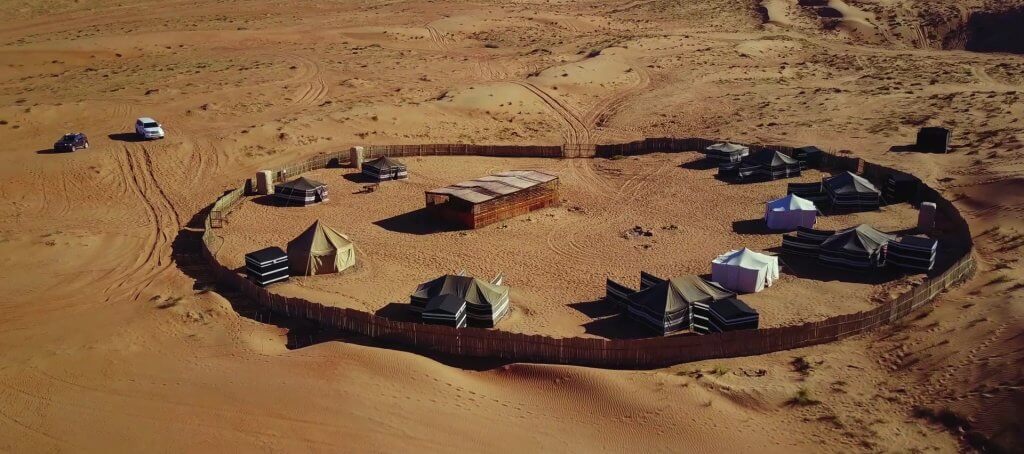 One of the most beautiful and diverse areas of Oman is the Governorate of Dofar, in the south. It’s about 1000 km from Muscat and has lots of interesting places to discover, and that is where I headed, starting with the desert ruins called “Ubar”.
One of the most beautiful and diverse areas of Oman is the Governorate of Dofar, in the south. It’s about 1000 km from Muscat and has lots of interesting places to discover, and that is where I headed, starting with the desert ruins called “Ubar”.
In lots of ancient cultures, there are stories about cities which were lost and humans didn’t get to see, like Atlantis, which disappeared under the sea, or “Shambala”, which disappeared in the mountains somewhere! In Arabia, there’s the same story about “Iram of the Pillar”.
The Quran tells the story about this very rich city in the desert, with its high towers (which is very unusual for the desert), but because the people of the city were evil and didn’t follow the righteous ways, God sent them a desert storm, blowing sand for 7 days and 7 nights, until the city disappeared totally under the desert and vanished. Lots of people believed that this story was just a metaphor and “Iram” didn’t really existed in the real world, until 1991, when archaeologists discovered, with the help of satellite, what seems like a town under the desert sand in the “Dofar” area. When they dug it out, they discovered that it was a real town under the sand, and the more surprising thing is that it has remains of high towers around the whole settlement, which makes it identical to the Quran story, and very likely to be the lost city of “Iram”, or what the Omani people call “Ubar”.
This archaeological site is in the middle of the desert, at the dangerous area called “Al Roub Al Khali”, which means the “empty quarter”. This is a hostile desert, with lots of moving sand, and there are horror tales about “Jin” and unknown creatures that live there. “Al Roub Al Khali” is a huge area in Arabia, about 1000 km in length and 500 km wide, stretched over parts of Oman, Saudi Arabia, Emirates and Yemen. There are no roads or tracks. There are only different tribes of the area who can guide you through it, and I, that night, had to camp in that desert.
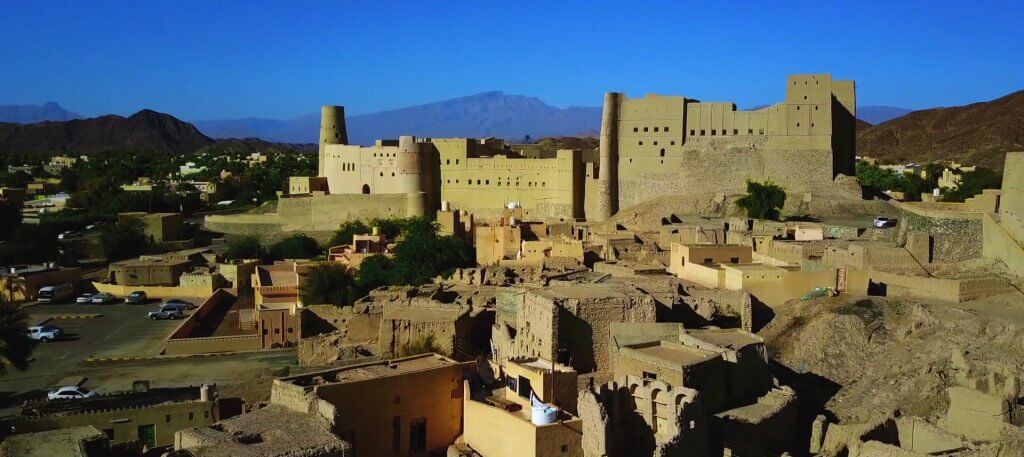 Next morning, I didn’t wake up to the peaceful silence of the desert as usual, but, instead, to the hissing of the sand flying in the air, with the loud whistling of the wind. My tent was almost blown away. A mighty sand storm was what I had the chance to experience; a storm that made the world around me look like a scene from a horror movie and gave me the feeling of how the people of “Ubar” felt centuries ago! I could hardly open my eyes. Sand was hitting my skin like needles…visibility was extremely poor. In one way, I was fascinated by the force of nature, but, on the other hand, I had to take shelter and hide! There was no other way.
Next morning, I didn’t wake up to the peaceful silence of the desert as usual, but, instead, to the hissing of the sand flying in the air, with the loud whistling of the wind. My tent was almost blown away. A mighty sand storm was what I had the chance to experience; a storm that made the world around me look like a scene from a horror movie and gave me the feeling of how the people of “Ubar” felt centuries ago! I could hardly open my eyes. Sand was hitting my skin like needles…visibility was extremely poor. In one way, I was fascinated by the force of nature, but, on the other hand, I had to take shelter and hide! There was no other way.
I spent a few hours hiding in the ruins of the lost city, watching the sand turning the day into night and listening to the angry storm cursing all beings. I was waiting for the anger of the desert to subside, but there was no peace in sight. So, around midday, I lost my patience and I decided to challenge it. It was a very bad decision…
In the car, I was protected from the sand, but driving was kind of impossible. I could hardly see anything. I had to be extremely concentrated, trying to stay on the road, which was invisible most of the time, so the car often went off the road. You only realise that
when you feel that one of the tires is in the deep sand. It was a very dangerous ride, but, luckily, there were hardly any cars on the road that day. I guess people living in such an environment are wiser than us; they really understand and respect the force of nature! For me, driving that day was like putting both hands in the pocket of luck. By the fall of the night, the storm slowly calmed down. As I was already too exhausted from the ride, I had to stop for the night! I was near one of the biggest sink holes in the world.Oman has some of the deepest and biggest sink holes in the world. So, what is a sink hole? The crust of the earth is full of huge caves under our feet, which we normally don’t get to see. But, if, for some reason or another, the roof of one of these holes falls down, then a hole will appear on earth. Some of them are really huge and very deep.
Dofar has the second biggest sink hole in the world. It’s called “Teeq sink hole”. It goes down to over 250 metres deep and it has a volume of over one hundred million cubic metres. Hardly anyone comes to visit this area, so, the next day, I was all alone, walking on the top of this mighty depression… an indescribable place and atmosphere. It is hard to find words to express the feeling of walking on the edge of that sink hole, but one thing is for sure, human will feel so tiny and so insignificant…and the scenery around me looked like a scene from some movie about a different planet.
 Being in “Dofar”, I couldn’t miss visiting “Salalah”, an ancient city, the second biggest of Oman and the most beautiful, with its wonderful position close to the mountains and right on the Indian ocean. The weather here is milder than the rest of the Oman, especially in autumn, when it attracts a lot of people from all over the country… It’s always pleasant to spend a few days in this town, but what’s very special about this town is that it used to be a very important town on the “Silk Road”. It was famous in antiquity all over the world for being the heart of the trade of “frankincense”, mainly to China and to Europe. I don’t think many people nowadays know what “frankincense” is.
Being in “Dofar”, I couldn’t miss visiting “Salalah”, an ancient city, the second biggest of Oman and the most beautiful, with its wonderful position close to the mountains and right on the Indian ocean. The weather here is milder than the rest of the Oman, especially in autumn, when it attracts a lot of people from all over the country… It’s always pleasant to spend a few days in this town, but what’s very special about this town is that it used to be a very important town on the “Silk Road”. It was famous in antiquity all over the world for being the heart of the trade of “frankincense”, mainly to China and to Europe. I don’t think many people nowadays know what “frankincense” is.
We all know the story from the Bible about the three holy Kings of the
East, who were following a star to find the new king and so they brought presents to
new born baby “Jesus”. So, what were these presents? The three presents were “gold”,
myrrh” and “frankincense”. Gold, we all know, has always been a commodity. “Myrrh” is a resin from a certain tree that grows in Africa and parts of Arabia, known for its healing qualities, but, actually, the most precious of them all, at the time, was “frankincense”, which also is a resin from a certain tree that grows only in Oman. “Frankincense” has much more, amazing healing qualities than “myrhh”.
People in antiquity used it for healing problems of the stomach, blood cleansing, rheumatism and headache… it has also been used for spiritual cleansing and rituals around the world, and here I must mention that the Eastern Orthodox church and the Armenian church are the biggest importers of “frankincense”, and they are still using it in all of their important ceremonies.
Old people call “frankincense” “God’s gift to humans”, so, before leaving “Salalah”, I had to get lots of “frankincense” for myself, which I put in water and drink sometimes.
“Salalah” is the last big town in the south of Oman. The coast here is spectacular and very wild, which perfectly fits my soul, so I kept driving and driving along sandy beaches and over rocky cliffs, until I was suddenly stopped by a military checkpoint and tanks on the side of the road. I was shocked and they were surprised to see a foreigner here, since it was the town of “Dhalkut” right on the border of Yemen.
After checking my papers, they let me pass to a small beautiful town, but, there, I realised how far I was from anywhere and I was undecided in my head if I should go back to “Salalah” or keep going to Yemen!









